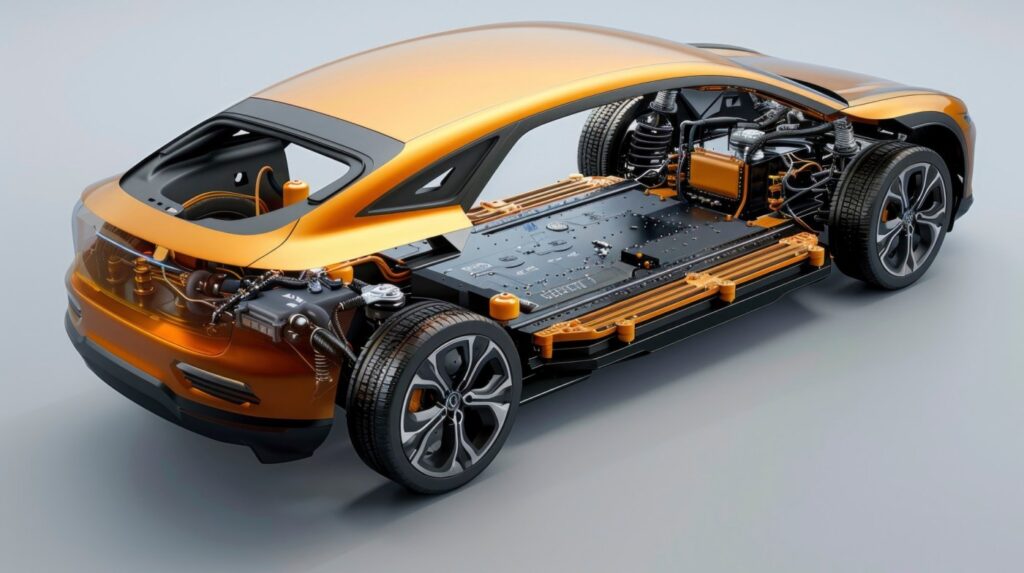
The future of automotive transportation is electric or at least electrified. In 2024, Americans bought a record 1.3 million electric cars, according to Cox Automotive’s Kelley Blue Book. Several carmakers sold more EVs than ever.
At the same time, several automakers are adding more hybrid vehicles to meet buyer demand and respond to the evolving market. Hybrid powertrains offer a compelling solution for those who want to improve fuel efficiency without making the leap to a fully electric vehicle, said Sean Tucker, lead editor at KBB.com.
“Hybrids are a great solution for many drivers,” he said. “Today, most hybrids have more horsepower than gas-powered models and have better fuel economy.”
An electrified mild- or full-hybrid powertrain over an internal combustion engine (ICE) comes at a modest price bump and the boost in fuel economy is significant.
There are three main types of hybrid powertrains: mild hybrid, full hybrid and plug-in hybrid. Here is a look at how they work.
Mild hybrids
A mild or light hybrid vehicle typically includes a small electric motor, a battery, and a generator integrated with an internal combustion engine. The main differences between light hybrids and other types of hybrids are in the size and role of the electric motor and the battery. The battery in a mild hybrid is smaller than those found in full hybrids or plug-in hybrids, and it is not designed to power the vehicle on its own for any significant distance.
Key functions of a light hybrid:
Assisted acceleration: When the driver accelerates, the electric motor kicks in to help the vehicle reach higher speeds without consuming more fuel. The additional boost helps reduce strain on the engine while improving fuel efficiency.
Regenerative braking: The electric motor acts as a generator during braking or deceleration. The kinetic energy generated from braking as heat is converted by the motor into electrical energy and stored in the battery. This process recovers some of the energy that would otherwise be lost, which helps to reduce fuel consumption.
Engine off function: The engine-off function, known as idle stop-start, shuts off the engine at stop lights and in slow commuting traffic. The vehicle’s electric motor and battery will drive the vehicle at low speeds for short distances. The battery takes over certain functions like powering the air conditioning, radio, and lights. Lift off the brake pedal, and the engine immediately refires.
Full hybrids
According to the U.S. Environmental Protection Agency, vehicles with full hybrid systems can achieve up to 50 percent better fuel economy than traditional gasoline-powered vehicles.
In a full hybrid system, the electric motor and gasoline engine work in tandem to optimize power delivery. During low-speed driving to about 25 mph, the vehicle can run purely on electricity, which is ideal for urban commuting and stop-and-go traffic.
The internal combustion engine engages for additional power at higher speeds or during acceleration. When the vehicle decelerates or brakes, regenerative braking captures kinetic energy and stores it in the battery for later use.
Plug-in hybrid powertrain
Plug-in hybrid powertrains (PHEVs) address the range anxiety of a battery-electric vehicle. A plug-in hybrid has a larger battery than a full hybrid, which, in general, allows it to travel 11 to 35 miles before transitioning to the gasoline power.
When driving on battery power, the vehicle has full performance and transitions imperceptibly to gas-engine power.
Plug-in hybrid powertrains offer a compelling solution for eco-conscious drivers seeking a balance between efficiency, performance, and practicality. The electric mode significantly reduces fuel consumption and emissions during urban driving, lowering operational costs.
Key features and benefits of PHEVs:
Adaptable charging options: PHEVs can be charged through standard household outlets, with a home 240-volt charger, or at public charging stations. Charging a depleted plug-in battery will take around 2 ½ hours.
Cost: The initial cost of a PHEV is higher than a full hybrid, although long-term savings and incentives mitigate this. For example, the Kia Sportage full hybrid has a starting price of about $30,000 compared to the Kia Sportage PHEV at $41,000.
Government incentives and tax benefits: Many U.S. regions offer financial incentives and rebates for PHEV buyers, offsetting the initial purchase cost and encouraging adoption.
When deciding which type of electrified vehicle might be right for you, consider your personal preferences, location, driving habits, commute factors and budget. For PHEVs, also be sure to understand your plug-in charging options at home and on the road.
Mark Maynard has been writing about cars, their people, and products for 30 years. Find him at MaynardsGarage.com.
The news and editorial staffs of Southern California News Group and The San Diego Union-Tribune had no role in this post’s preparation.
